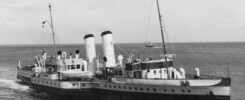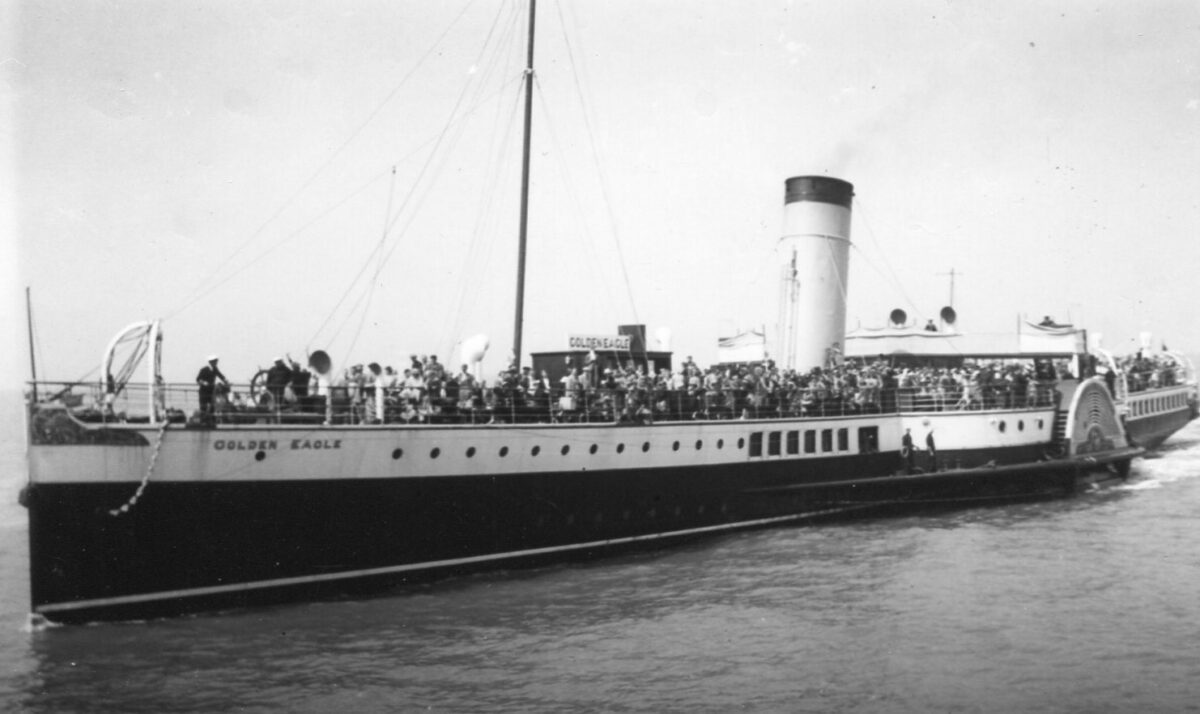
On Monday 12th August 1935 Golden Eagle, “The Happy Ship” was scheduled to leave Tower Pier (8am), Greenwich (8.30am), North Woolwich (9am), Southend (10.45am) for Margate (12.30pm). She then ran a sea cruise from Margate before leaving (4.30pm) for Southend (6.20pm), North Woolwich (8.30pm), Greenwich (9pm) and Tower Pier (9.30pm).
The same day “London’s Luxury Liner” Royal Eagle was scheduled to leave Tower Pier (9.20am) for Ramsgate (2.55pm) with return to Tower Pier (8.45pm).

Note that Golden Eagle was not scheduled to pick up at Tilbury on her way past which suggests to me that she was usually expected to be pretty fully loaded on leaving North Woolwich although on the day this picture was taken sometime in the 1930s she doesn’t seem to have many aboard at least sitting out on deck.
Golden Eagle was generally targeting the less well off market segments than Royal Eagle. For example the return fare on Golden Eagle from London to Margate on Mondays, Tuesdays, Wednesdays and Thursdays was 4/- (£14.33 today) where the same trip on Royal Eagle on Sundays would have set you back more than twice the price at 10/- (£35.82). The Royal Eagle was for the toffs. The Golden Eagle for everyone else.
The everyone else market segments seems to have liked fun and games on their trips with the steamer notice promising on the sea cruise from Margate:
The slogan we have adopted may cause people to wonder what difference can be made between ships going on afternoon cruises to sea. We lay claim that once you are aboard the “Golden Eagle”, there is not a dull moment. Sports and games start immediately on leaving the pier, the kiddies find real fun and enjoyment in the balloon-blowing competitions, skipping, musical chairs, tug of war and streamer throwing. Even the grown-ups cannot be kept out; they become young once again, and want to blow balloons and enter into the fun with all the keenness of the youngsters. Soon all are one great big happy family; hence our slogan, “The Happy Ship”
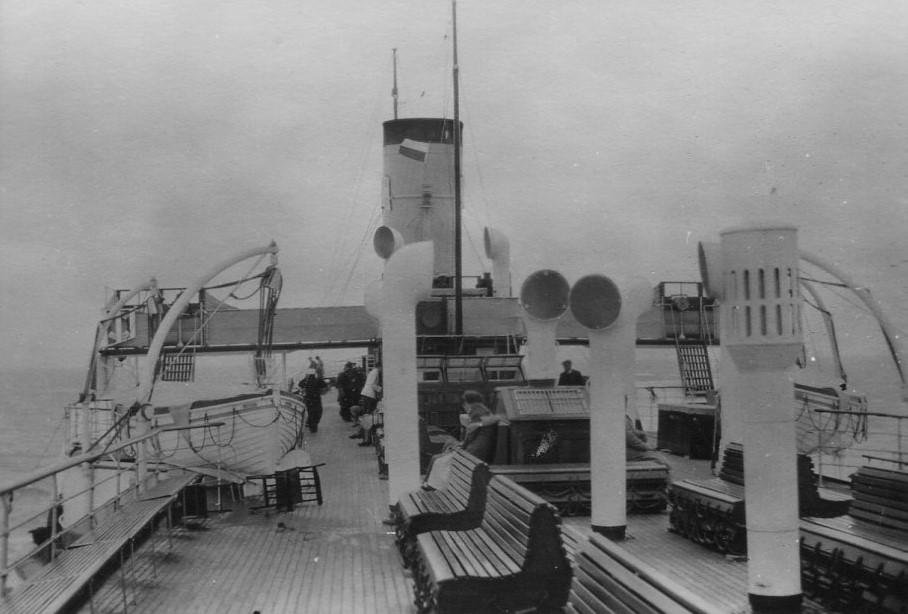
Golden Eagle was built in 1909 by John Brown on the Clyde and spent her entire peacetime career running Thames excursions.
During the First World War she became a troop carrier between the UK’s South Coast ports, including Dover, Folkestone, Southampton and Cowes, and France where her massive capacity of more than 2,000 proved useful for shifting large numbers of troops many of whom made a one way voyage only.
The records show that Golden Eagle carried 618,101 troops in this period covering a distance of 32,140 miles during which she consumed 12,839 tons of coal. Amongst those she carried were 6,329 Chinamen, 6,000 USA troops, 2,794 British repatriated prisoners of war and 3,998 hospital patients. .
It came as a surprise to me to find 6,329 Chinamen mentioned in these statistics of passengers carried between the UK and France on Golden Eagle. Chinamen? What were Chinamen doing there?
Well, a Chinese Labour Corps (CLR) had been formed and sent out to war with picks and shovels rather than rifles to play a major role in digging trenches, building fortifications, maintaining fighting vehicles and repairing roads, railways and bridges often under enemy fire.
Around 95,000 farm labourers were recruited from their remote villages in China into the CLR to work for Britain during the war from 1916 after escalating losses of British troops led to a dearth of labourers to do the spade work at the front.
The Chinese travelled across the Pacific to Canada by sea, over that country on sealed trains to avoid paying any landing dues and then across the Atlantic to Britain from where they were shipped off to France and Belgium aboard Golden Eagle and other ships where they were housed in labour camps and put to work ten hour days, seven days a week.
When the war was over, and other men had gone home, the Chinamen continued their efforts until 1920 with the dangerous task of clearing the battlefields of unexploded shells as well as burying the dead in the newly built cemeteries.
Their contribution was barely recognised at the end of the war. There is no tribute to them on any British war memorial and they have no descendants in the UK as they were refused any right to settle after the war.
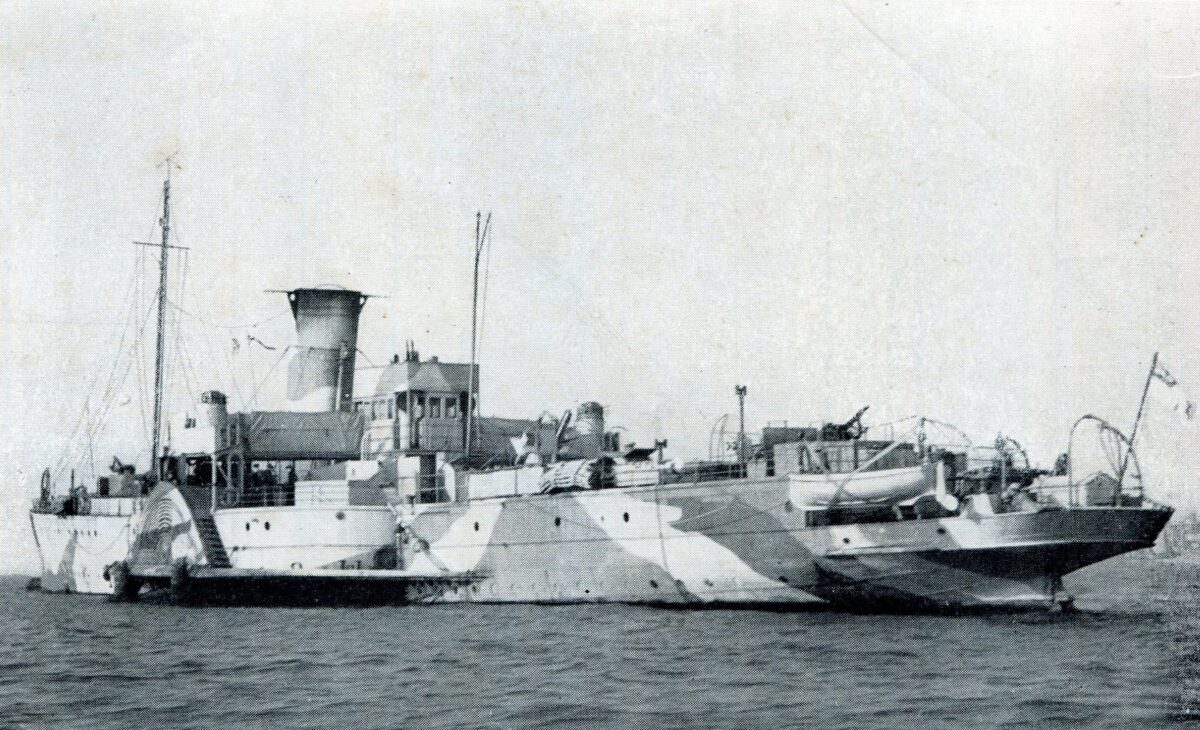
During the Second World War Golden Eagle was converted for use as an Auxiliary Anti–Aircraft Vessel.
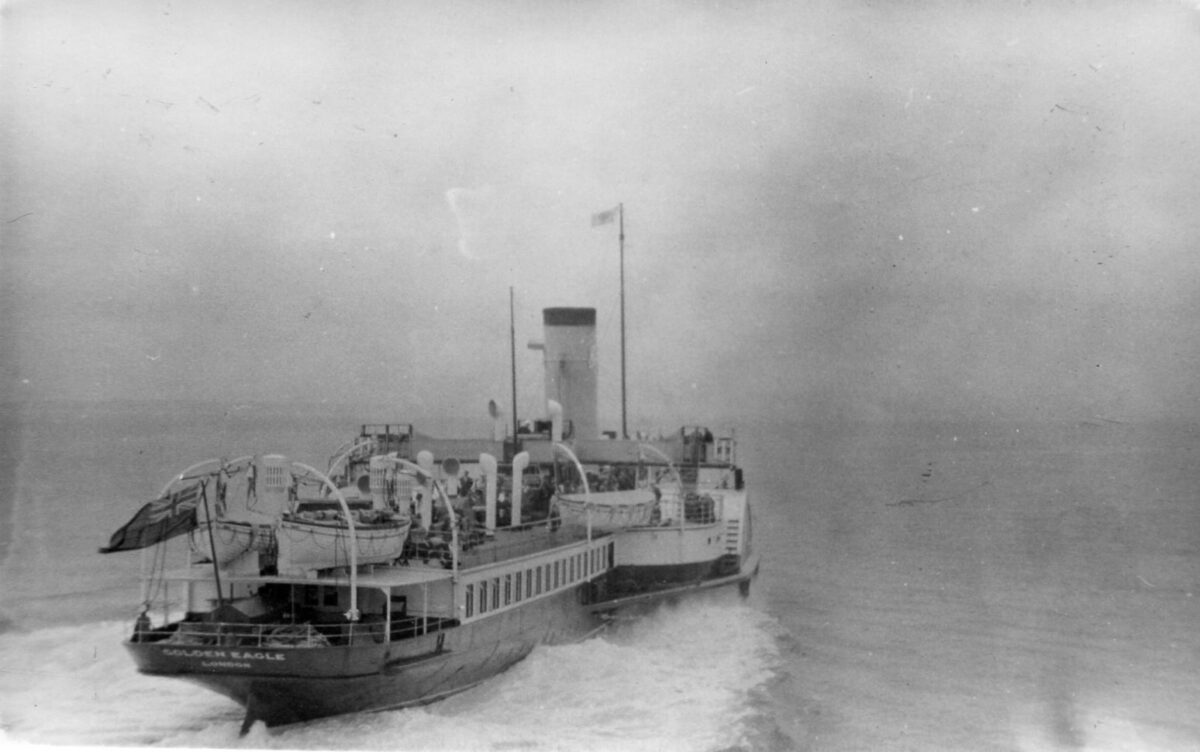
Returned from war service in 1945 she was given a major overhaul and started again on her peacetime activities in 1947 now rostered for the sailings from Tower Pier to Clacton.
She was withdrawn at the end of the 1949 season and laid up in Whitewall Creek on the River Medway until she was scrapped at Grays in Essex in 1951. That’s like scrapping a paddle steamer today which was built as recently as 1978.
Kingswear Castle returned to service in 2023 after the first part of a major rebuild which is designed to set her up for the next 25 years running on the River Dart. The Paddle Steamer Kingswear Castle Trust is now fund raising for the second phase of the rebuild. You can read more about the rebuilds and how you can help if you can here.
John Megoran
This article was first published on 12th August 2020.


